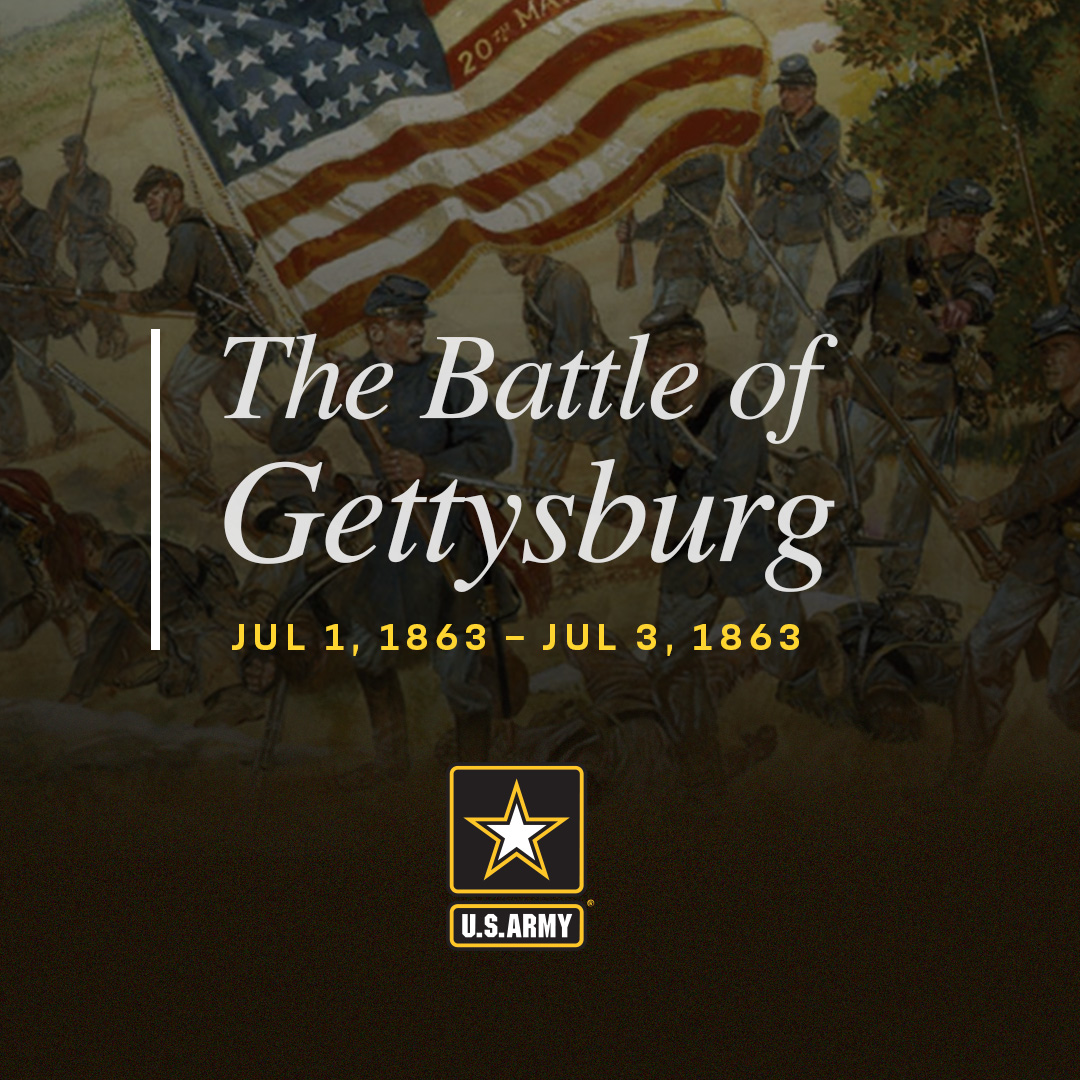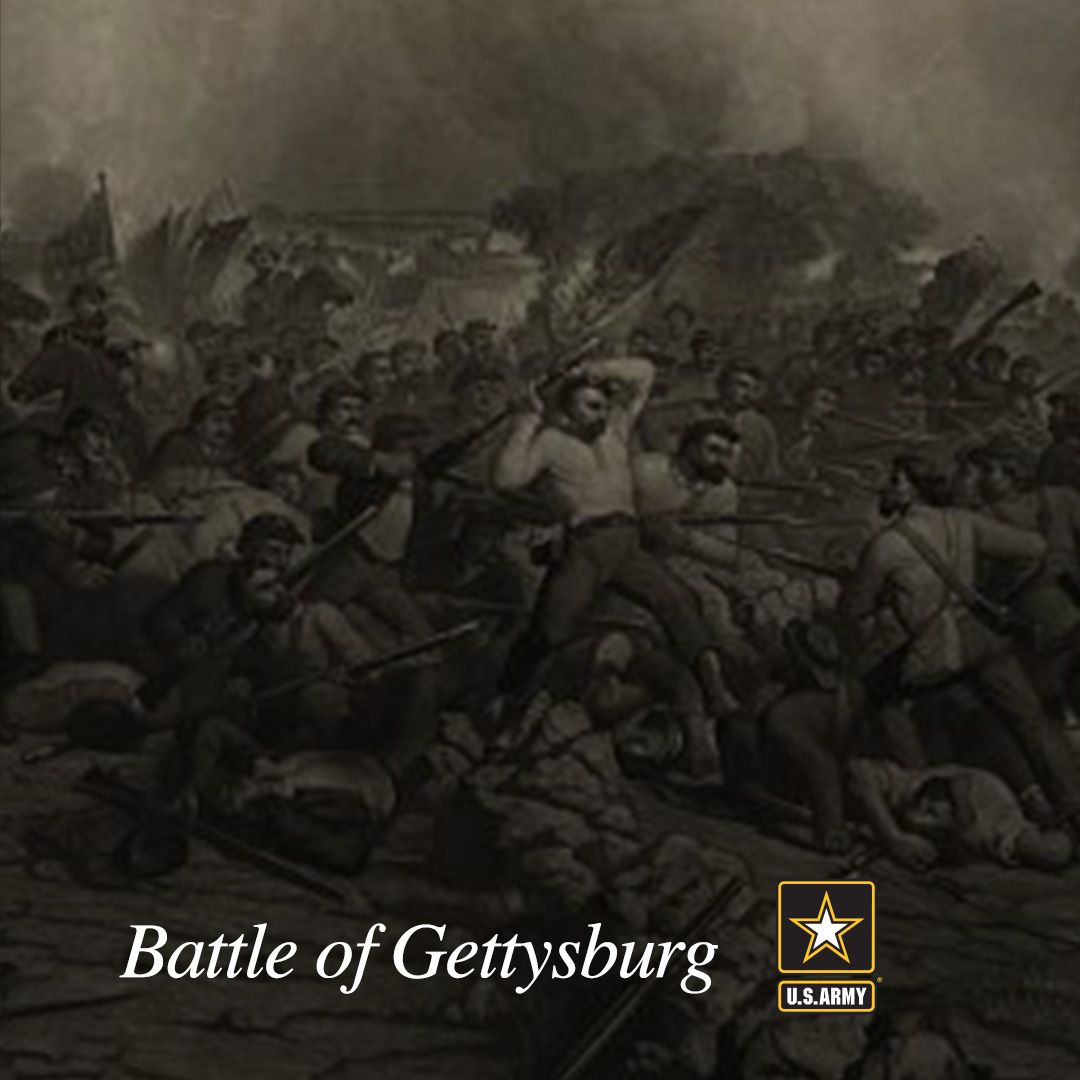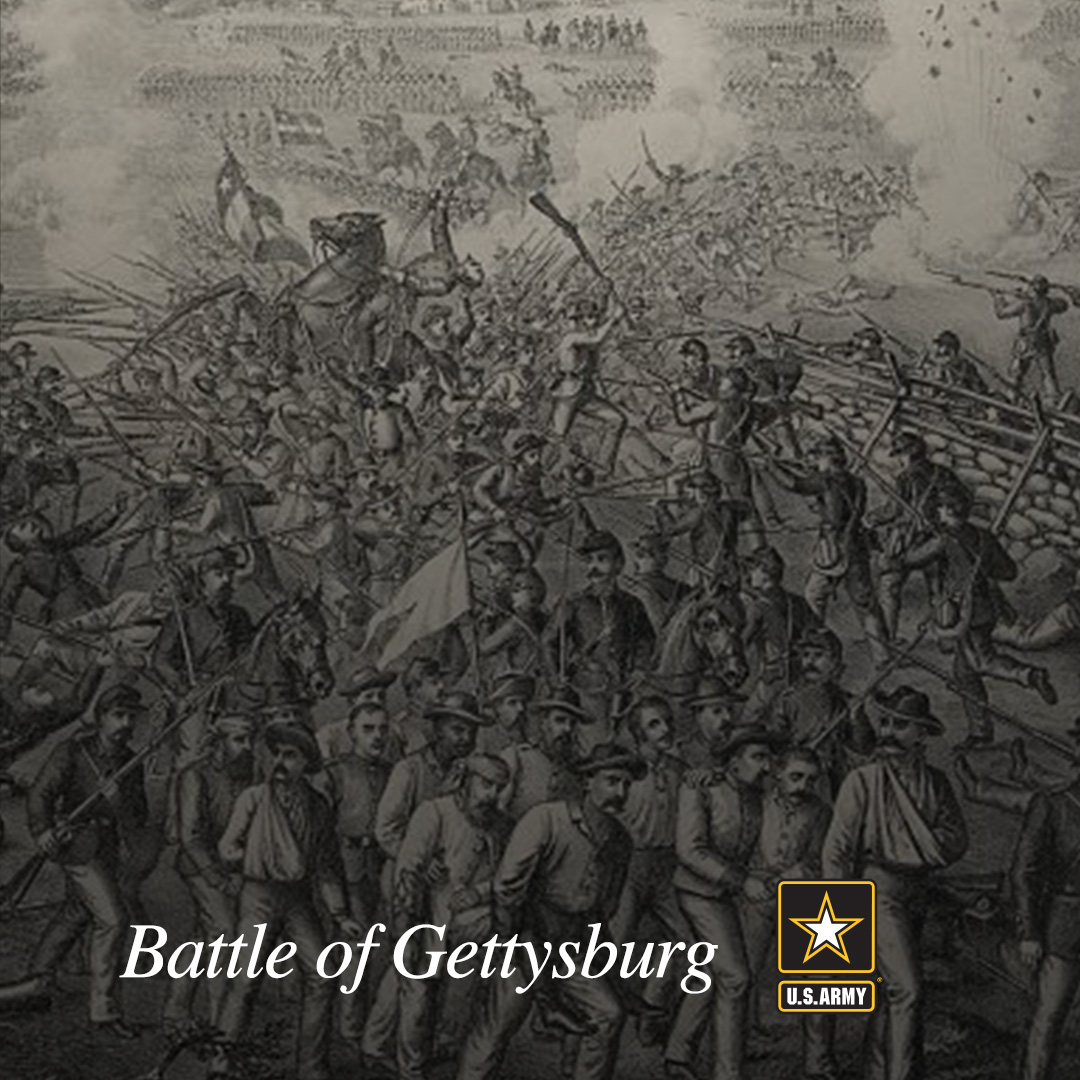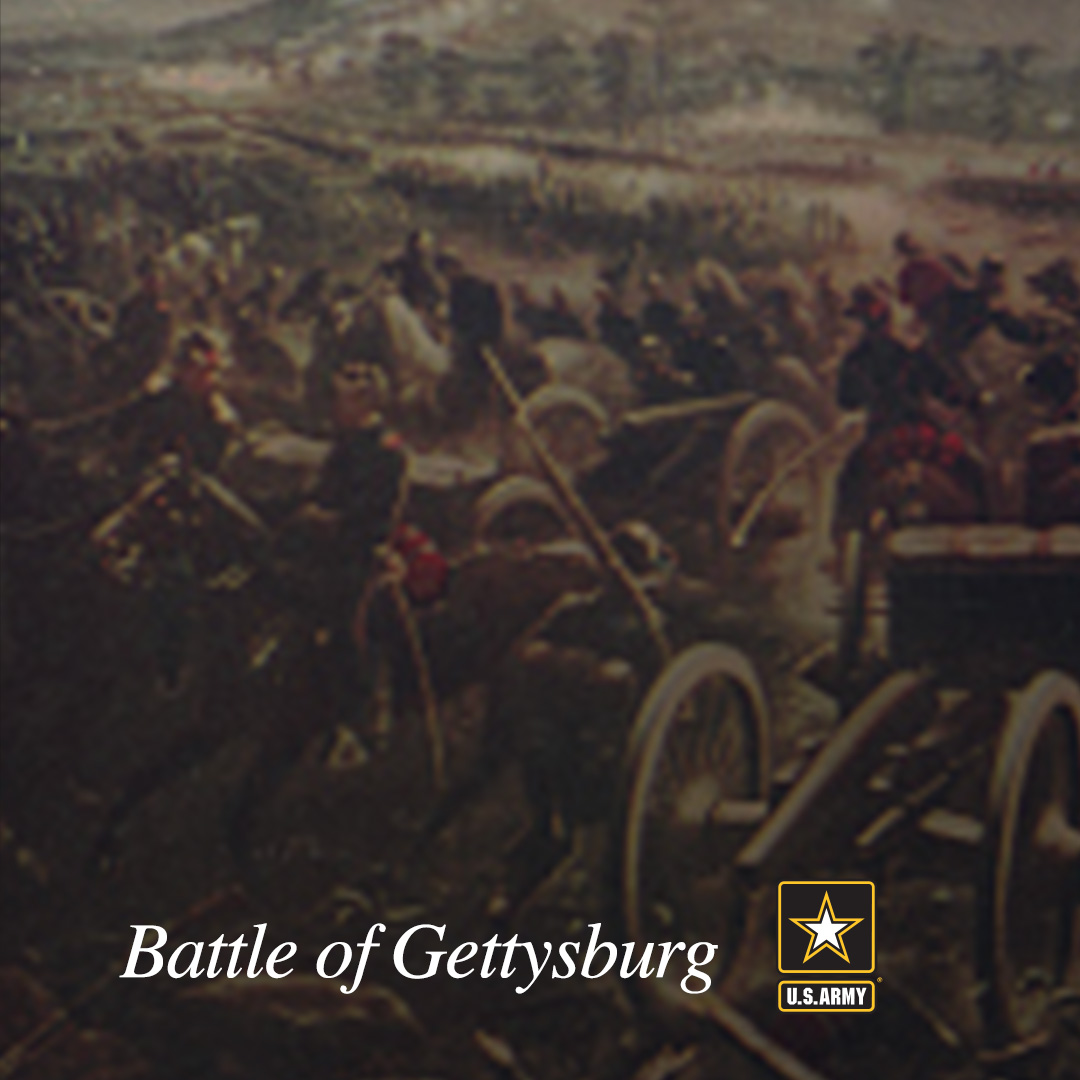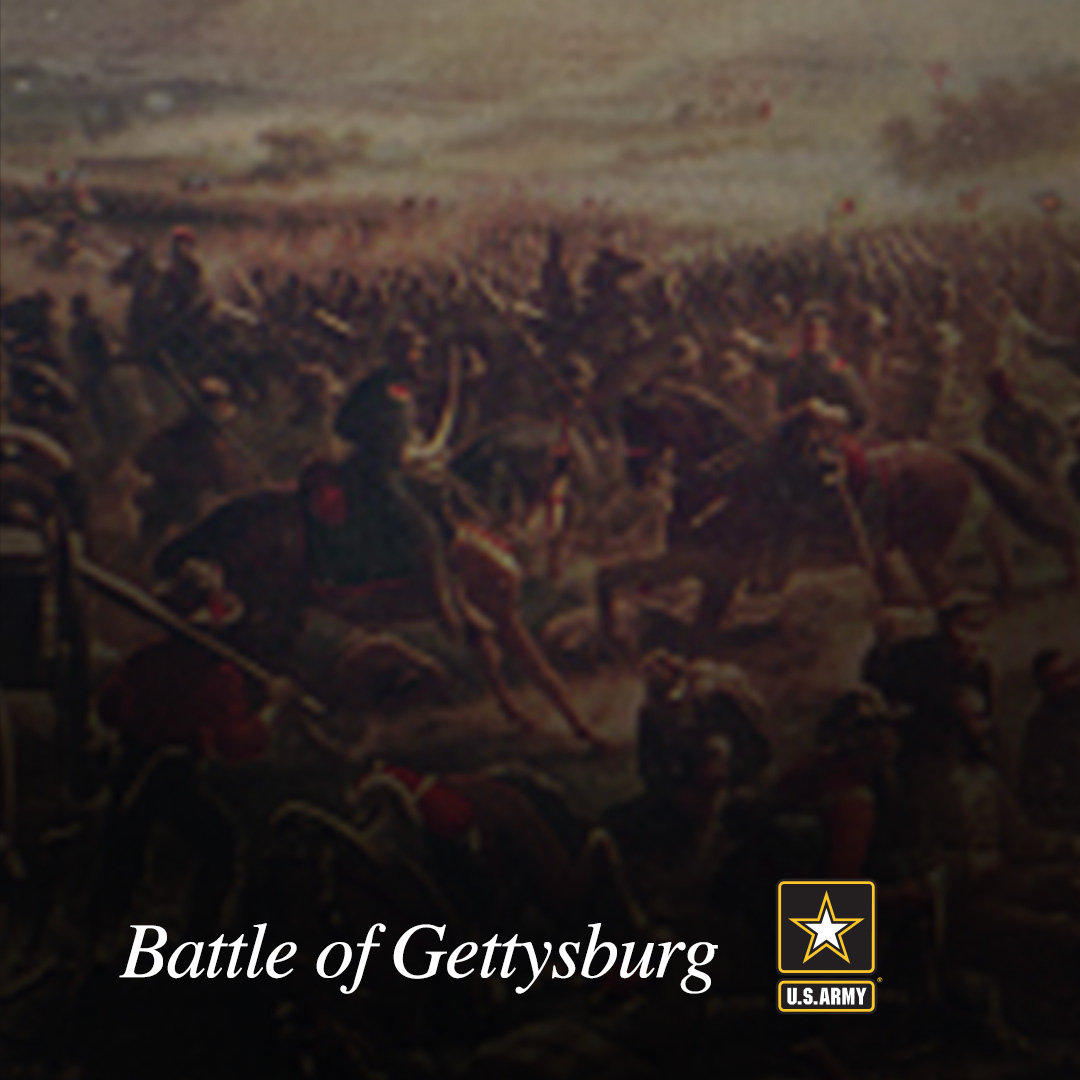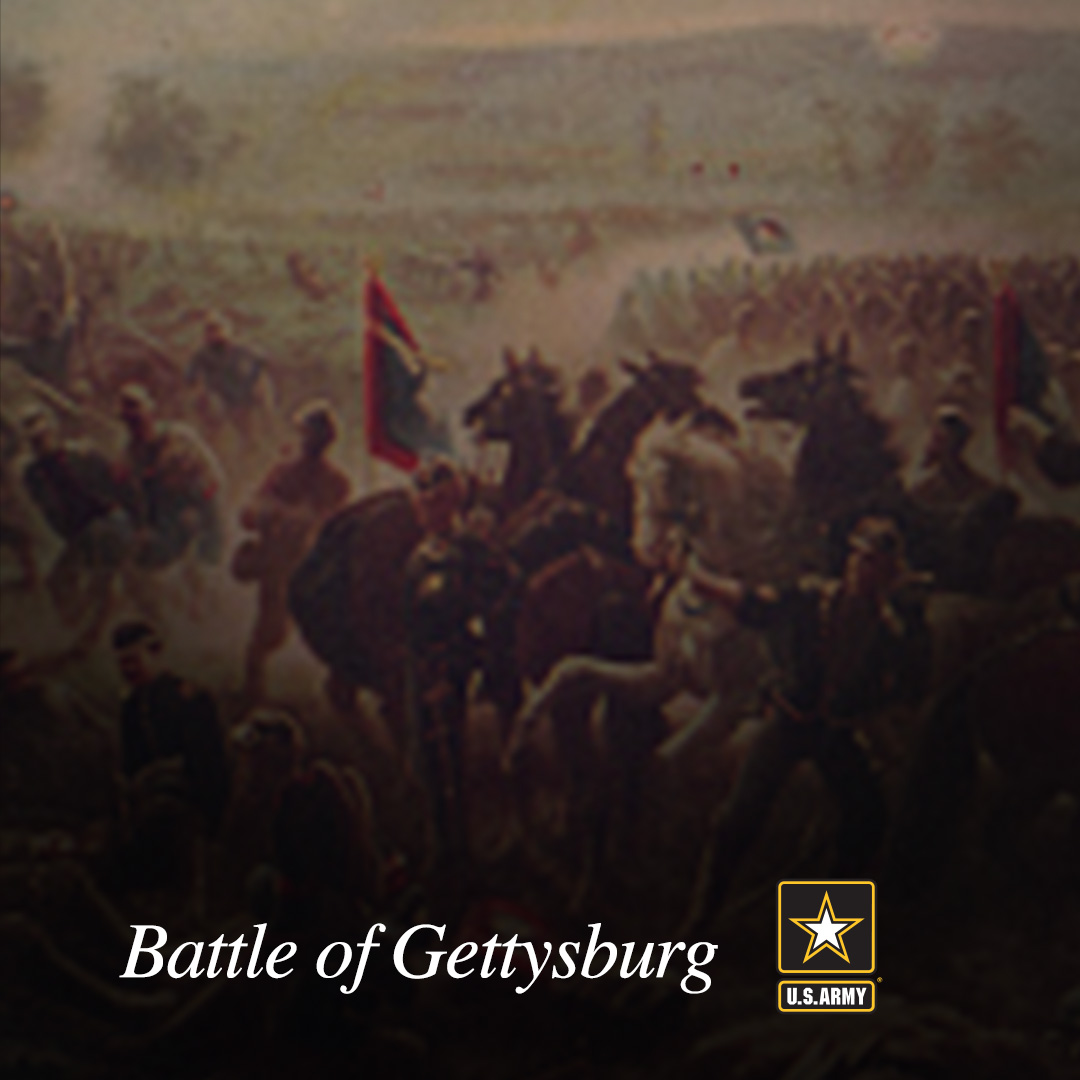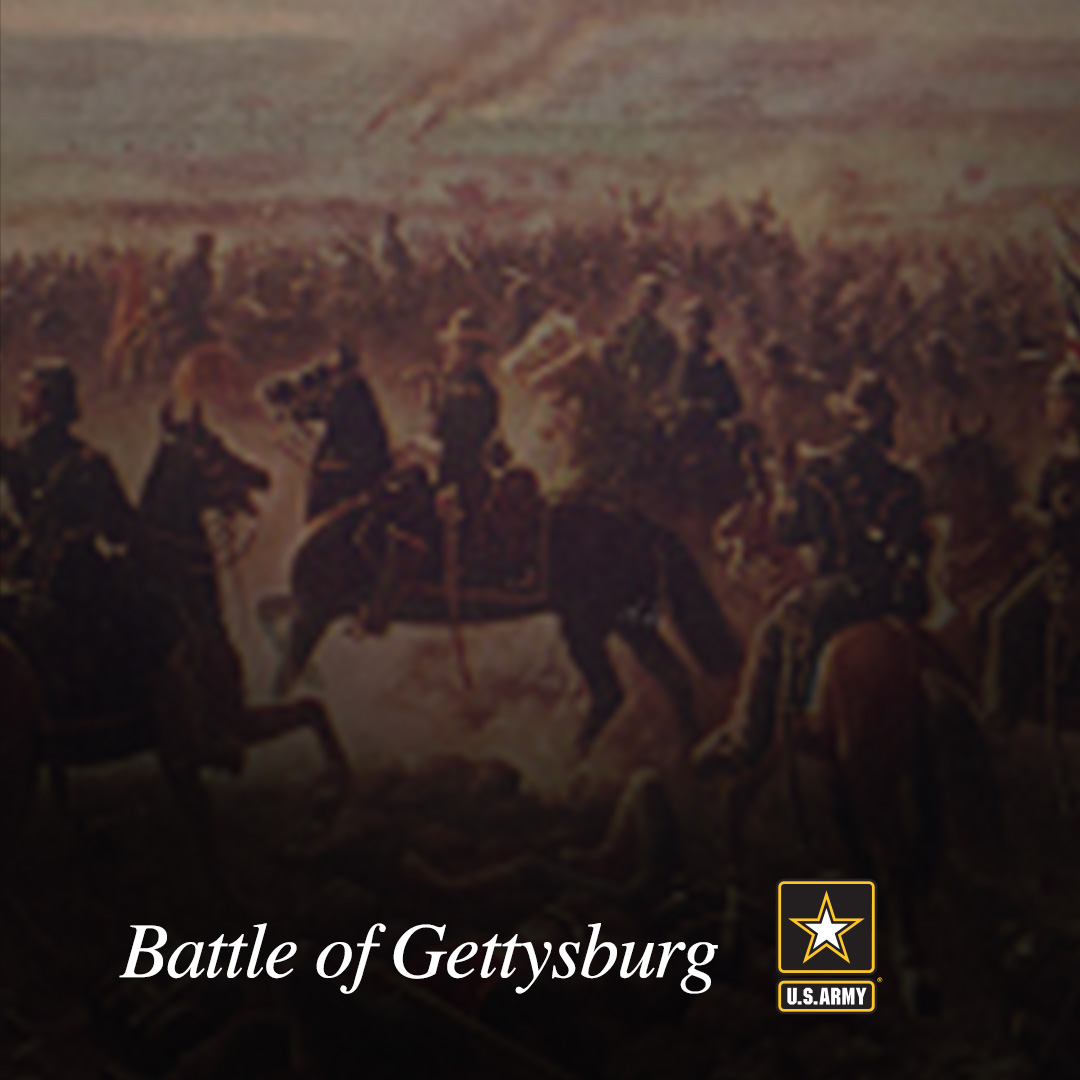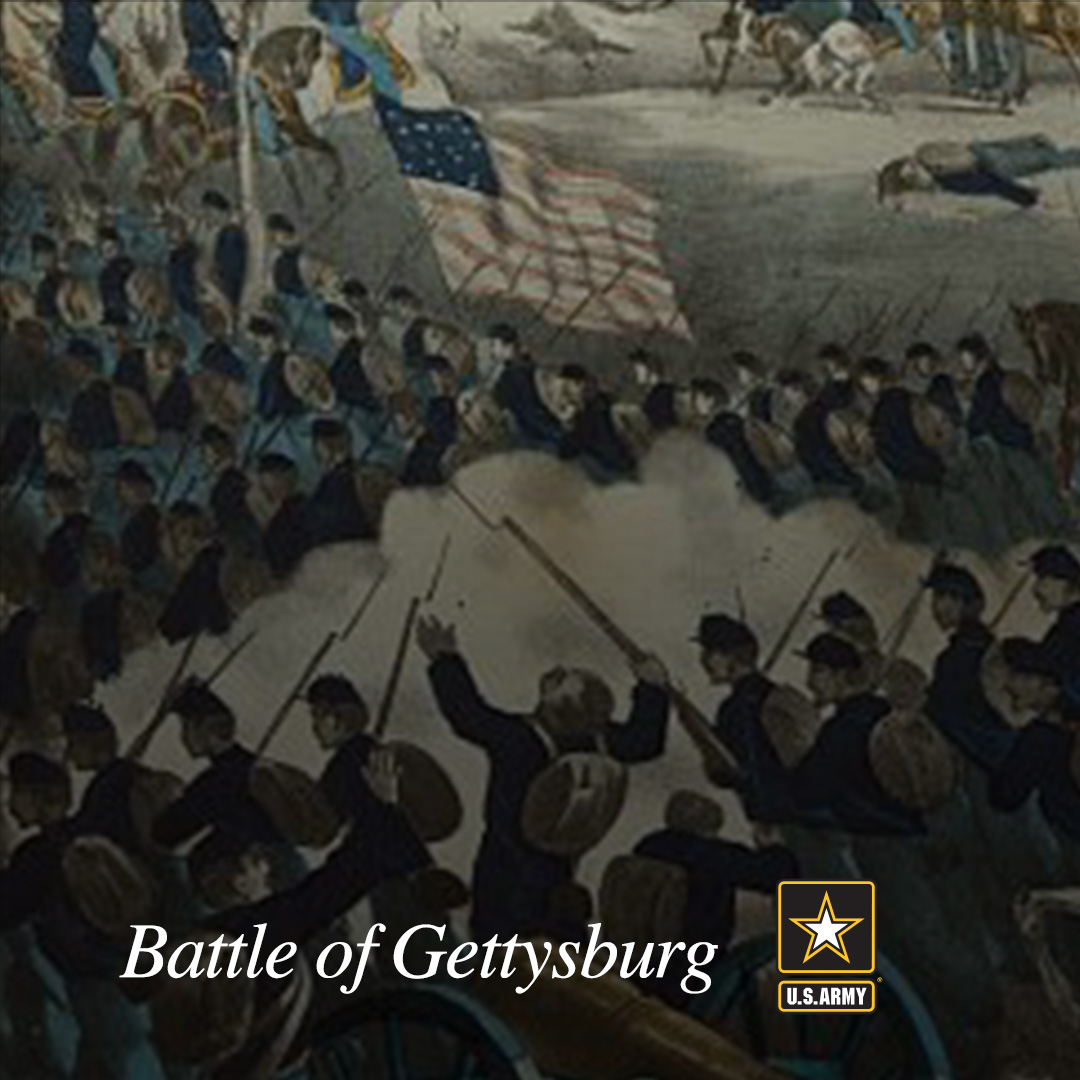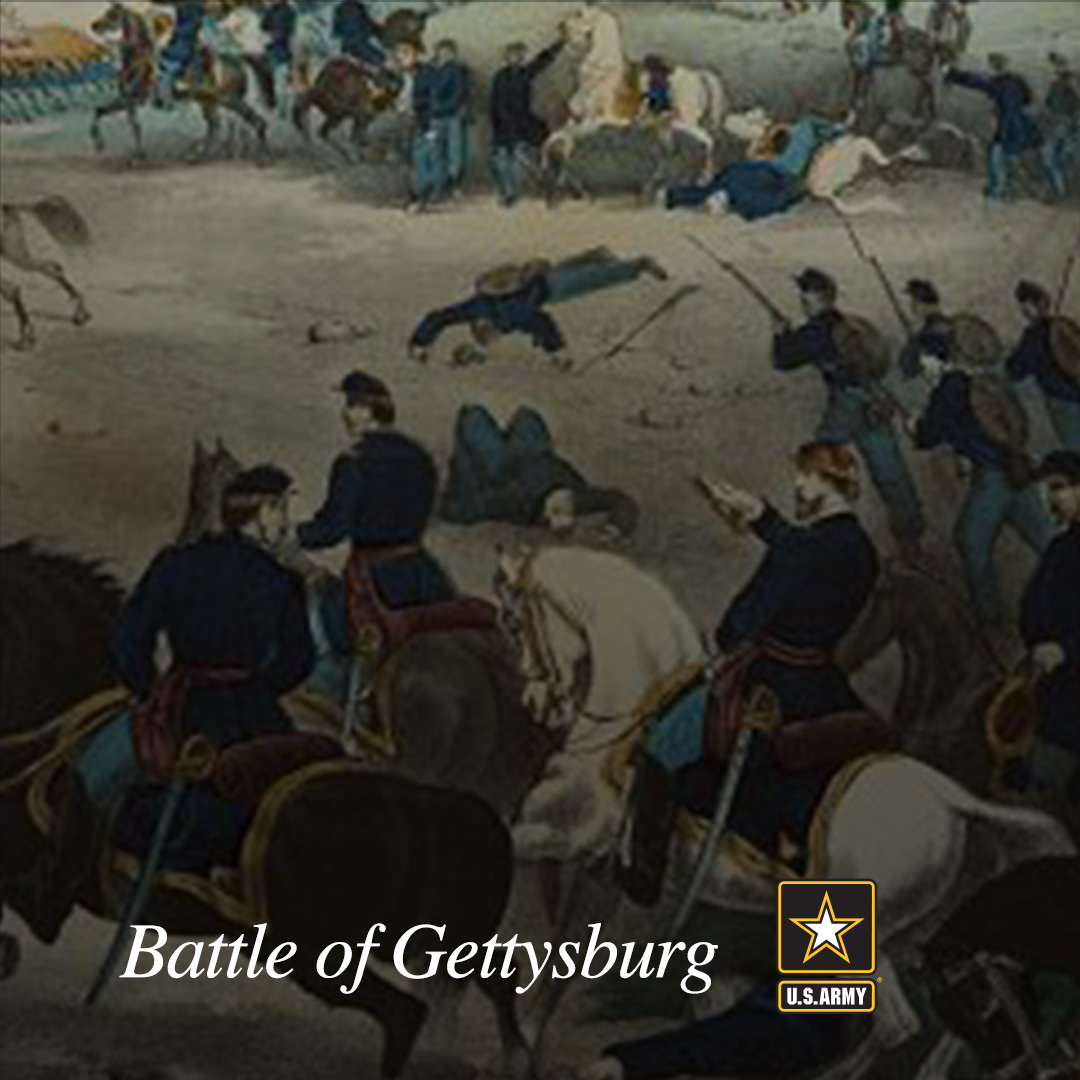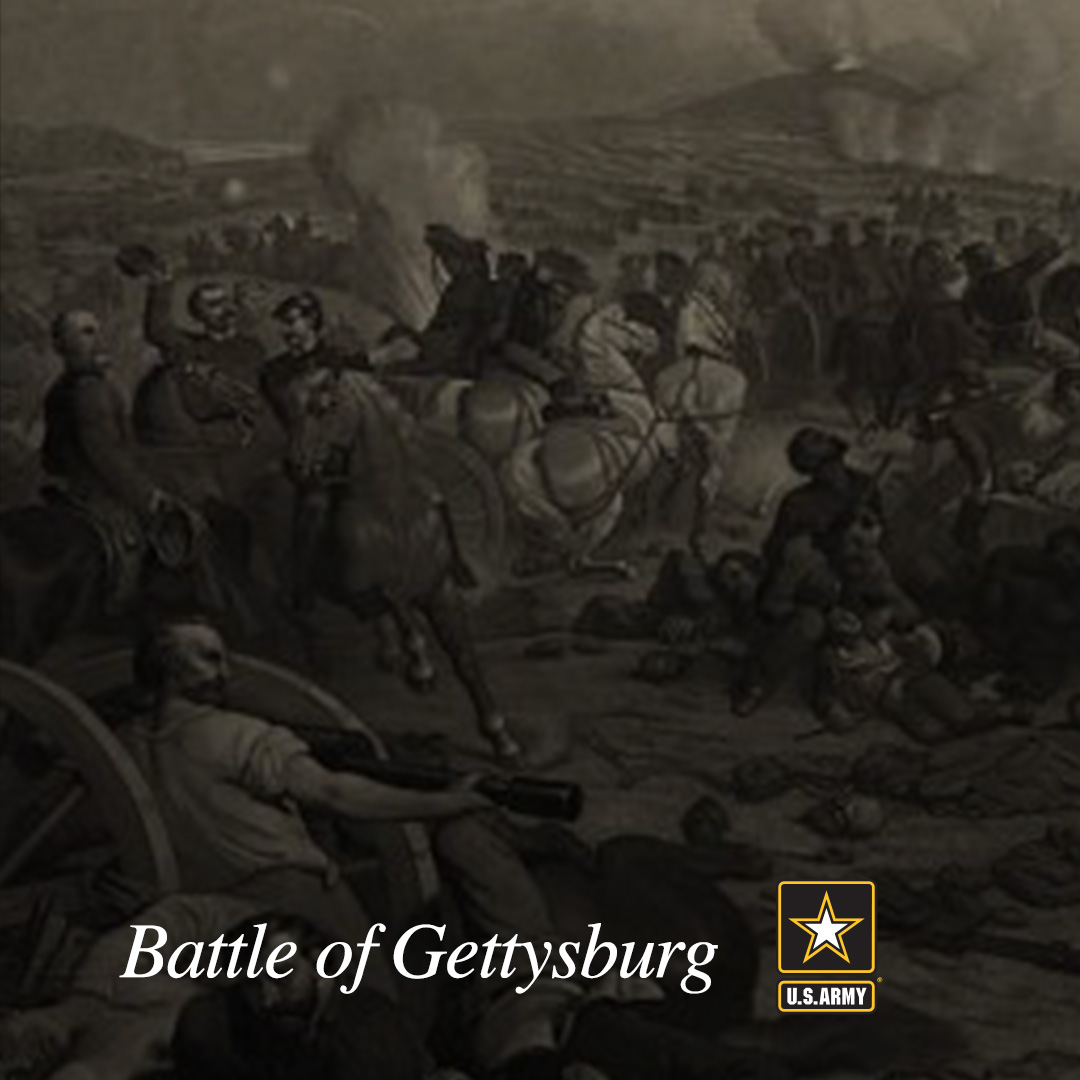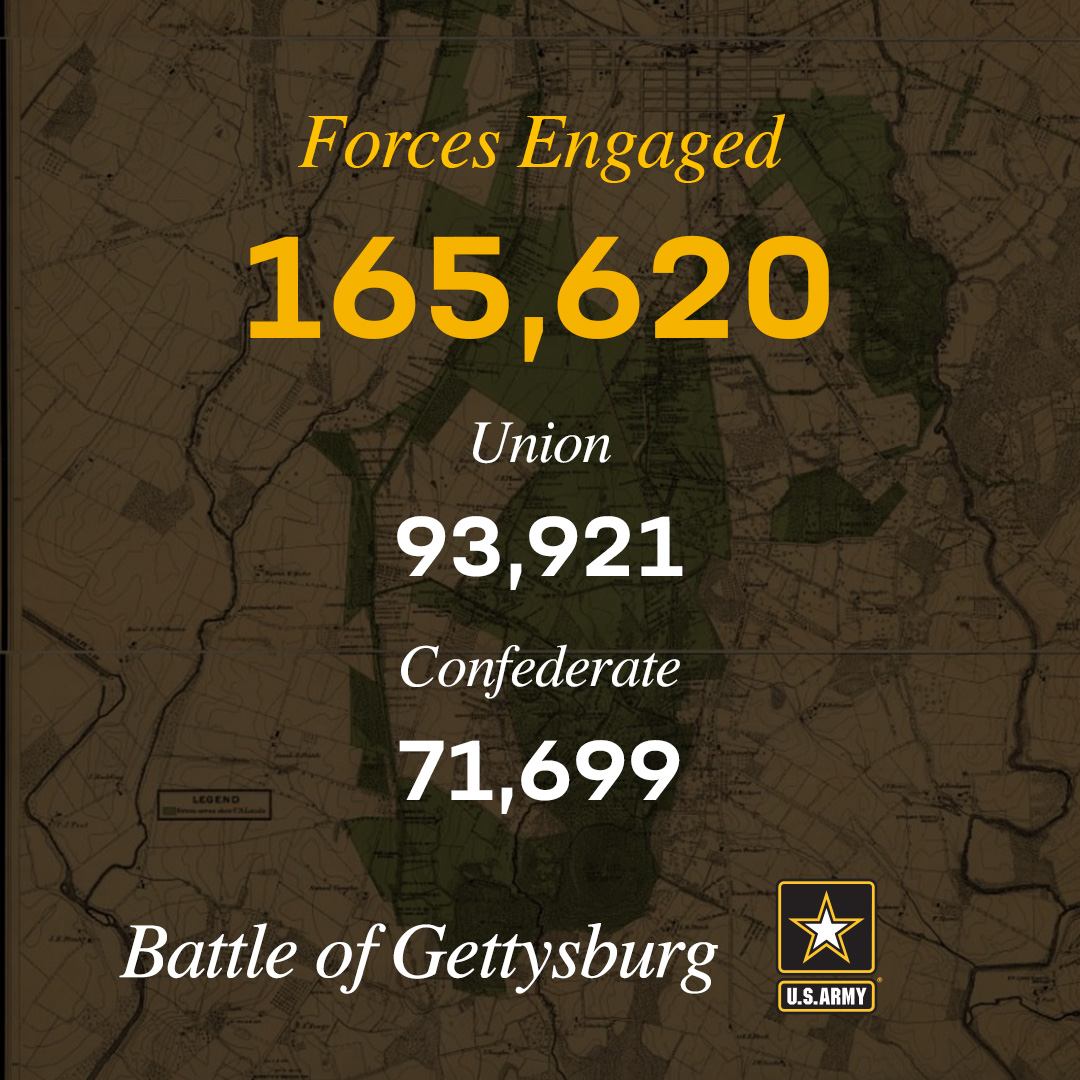Conversation
Thirty thousand Confederates overwhelm 20,000 Federals, who fall back through Gettysburg and fortify Cemetery Hill south of town.
#ArmyHistory
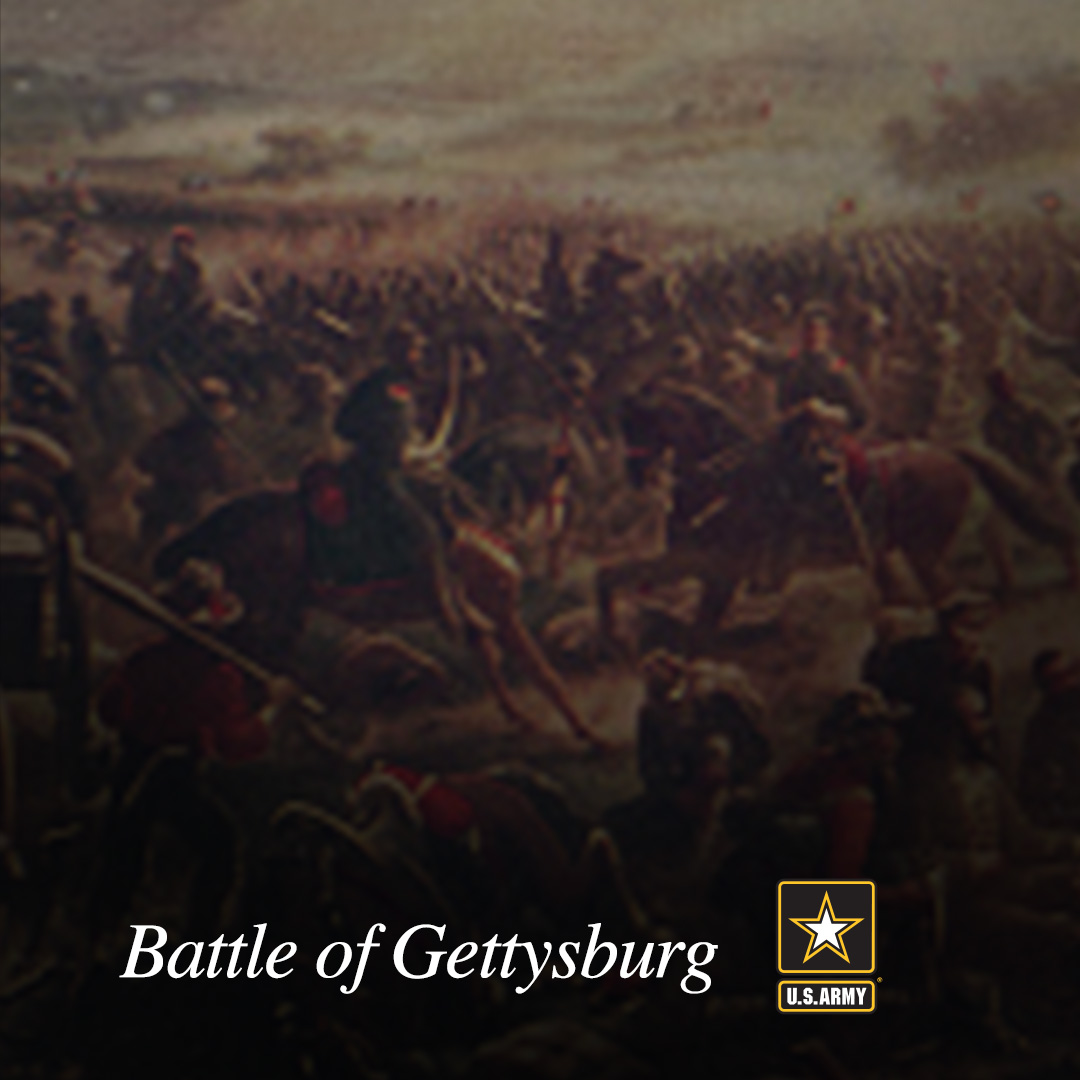
Replying to
July 2: On the second day of battle, the Union defends a fishhook-shaped range of hills and ridges south of Gettysburg. The Confederates wrap around the Union position in a longer line.
#ArmyHistory
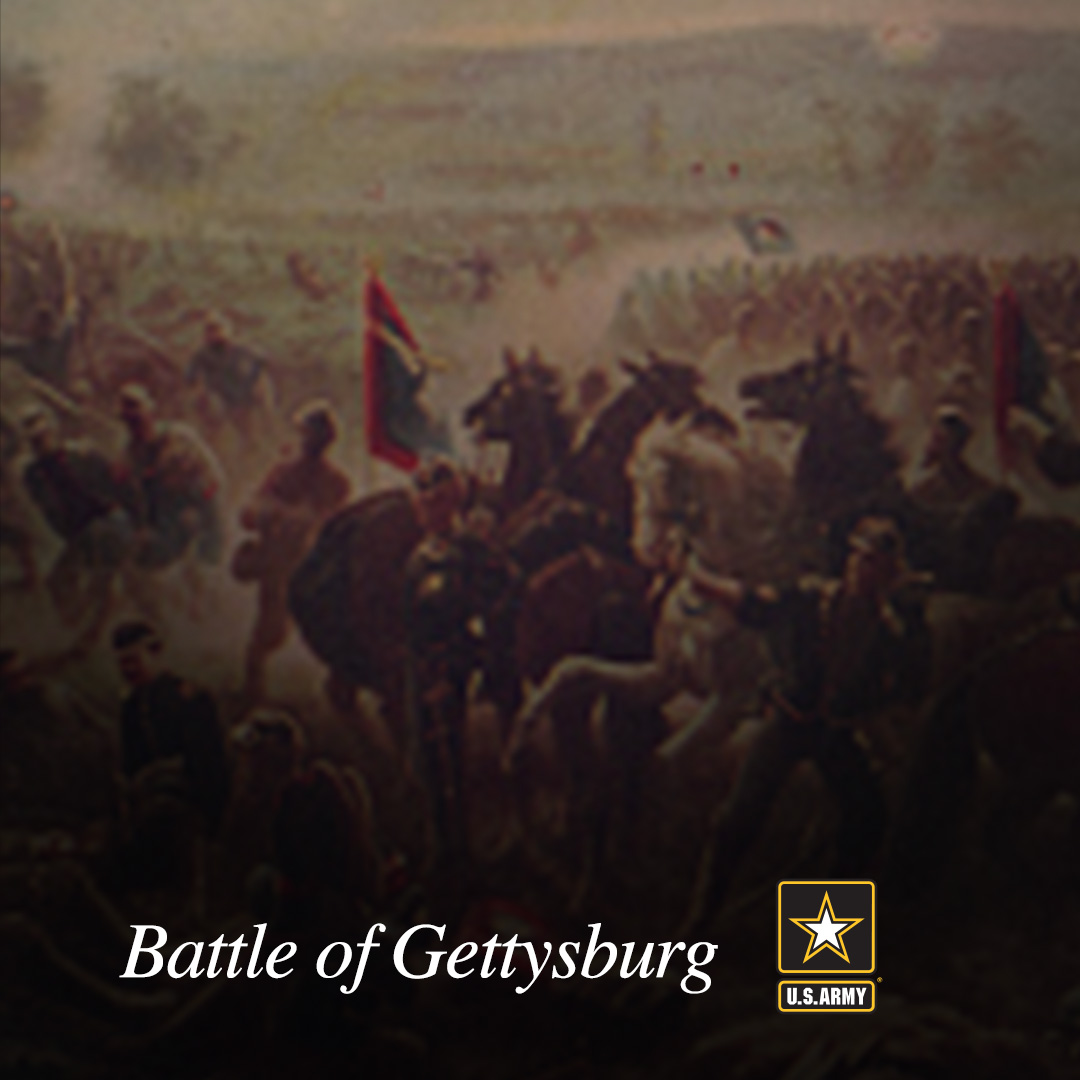
1
1
1
Estimated Casualties: 51,112
23,049 were Union Soldiers and 28,063 were Confederate.
#ArmyHistory
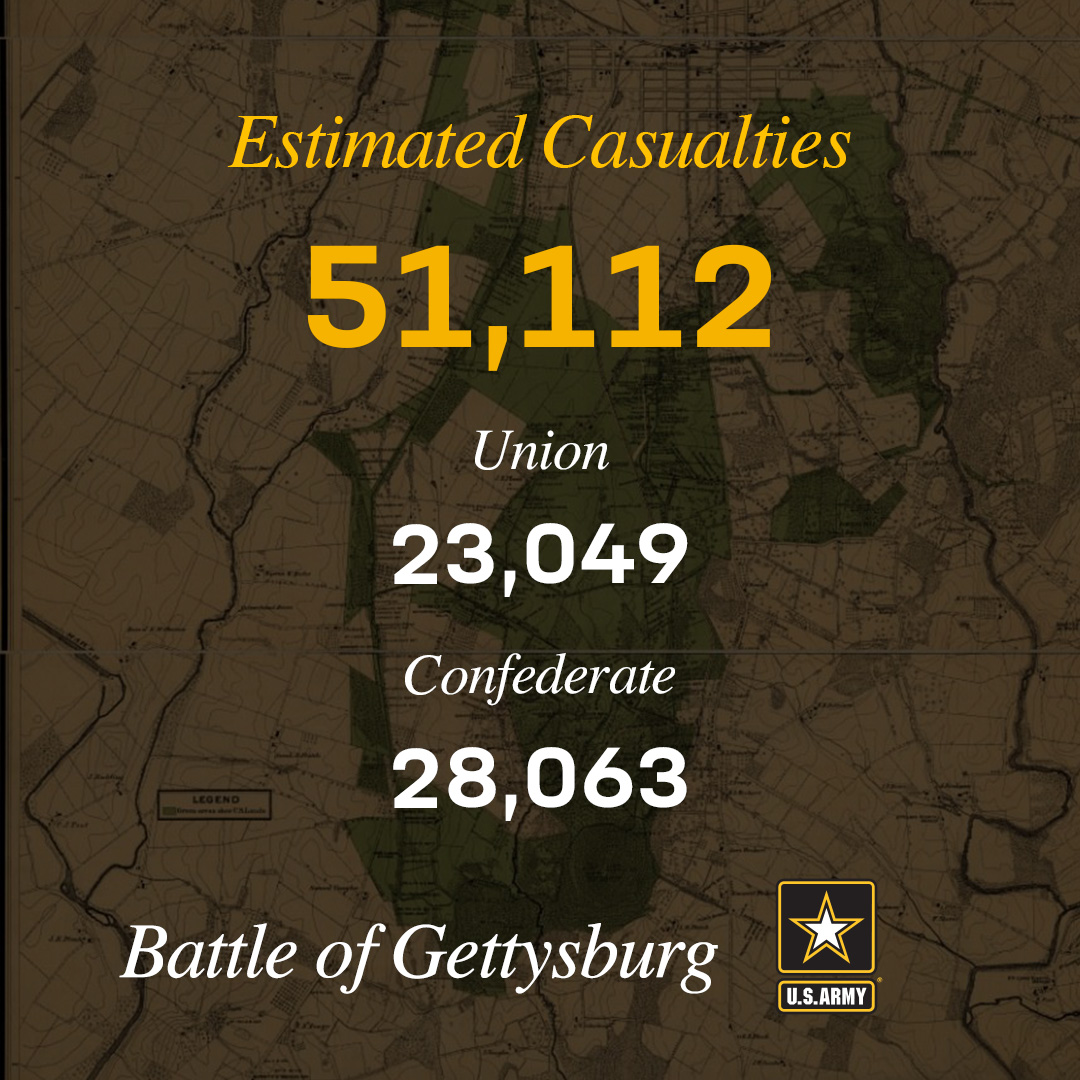
1
1
1
The Union had won in a major turning point, stopping Lee’s invasion of the north. It inspired Lincoln’s “Gettysburg Address,” which became one of the most famous speeches of all time.
#ArmyHistory

1
3

